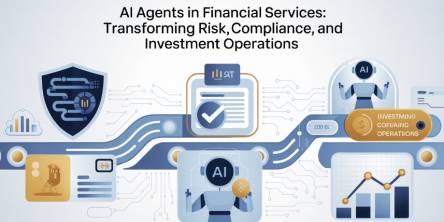Software Selection (Make the Right Choice)

Software selection: In general, it is better to have more than less choice. This applies particularly to the business world in the context of a call for tenders or a pre-purchase comparison. Enterprise software is a costly purchase over several years and having the right solution for your business needs is crucial. Limiting your options right from the start is not a good idea from a business point of view.
The principle of data recovery
To recover deleted files, the first method consists in analyzing the structures of the file system in search of the remaining traces after erasure. This makes it possible to find erased files with their original name, the dates of creation/modification /their exact size but the implementation is each time specific to the file system. Some file systems make the task difficult or almost impossible. It can happen to lose data in case of "accidental crash" of the hard disk (electric shock, physical shock, etc.) or during unfortunate formatting! It is often still possible to recover data using data recovery utilities. Nevertheless, data recovery solutions are not 100% safe, so it's better to choose the right tools! Such as recoverit.
Four tips to make the right choice
1. Demand more choice of solutions
When it comes to software selection, the objective in the early stages should be to keep your search as full as possible, so as not to limit your company's options. Better to start with a clear idea of the needs of the business. This includes all types of end users (reason beyond your service). Most types of enterprise software involve and are used by people in different parts of an organization, sometimes even outside (think for example of service providers/suppliers who access a supply chain management system).
Instead of talking to only one or two software vendors in the early stages of your search for a new software item, you should begin by thinking about what kind of software solution your organization needs. For example, do you need recruitment software or complete human capital management (HCM) system that would be better for you? Consider how the software will be used by each stakeholder group.
2. Beware of software recommendations
A typical scenario, which is also a common trap, is the recommendation by individuals. Someone in your organization, or even a trusted third party, recommend a specific product. In this case, possible pitfalls are related to the person making the recommendation. Here are some warning signs of having in mind:
A particular software publisher advised the solution. It is highly unlikely that he will recommend someone else's product and he will say that his answer is "perfect" for the needs of your business. The real surprise would be to hear him say the opposite and recommend the products of one of his competitors. This is not necessarily a complete lack of honesty on his part. It is logical that he knows his outcome perfectly and this perspective will be influenced by his extensive knowledge and experience of his product. However, his point of view is limited. Keep it in mind.
3. Think carefully about who you choose to oversee the selection project
An appropriate software selection project begins with a comprehensive assessment of your business needs. It is essential that a person is designated to monitor the overall process from start to finish. The evaluation should include the needs of all stakeholders, not just the main group. One way to avoid an overly restrictive approach on only one or two suppliers is to ensure that the needs of all stakeholders have been taken into account. Be wary of the "expert" who knows his field very well but may not be aware of the needs and concerns of your business users. This person can be very competent to identify the requirements, but it is essential to obtain the contribution of each sector of the company that will use or be directly impacted by the new software.
What about external consultants? It may be interesting to use an outside consultant to guide your software selection project, but make sure it is unbiased. Remember that the goal is to consider all the strong possibilities among the various suppliers in order not to limit your options, including in the early stages. If the external consultant you work with represents one or more vendors, it is unlikely that he or she will consider options outside the list of vendors with whom he or she collaborates. Be sure that the Individual you choose to assist you is unbiased and does not pay attention to brands.
4. Do not focus on the publisher's brand image
Today's up-and-coming publisher may be the locomotive of tomorrow. Some factors are essential, such as technical assistance. On the other hand, the reputation of a supplier is of little or no importance. Choosing business software is rarely a matter of prestige: a prestigious business address, a reception and impressive conference rooms, or even an attractive brand name should have little influence on the purchase. This is, or at least it should typically be a practical decision. Does the software provide all the functions required by your company? Do users easily adapt it? Is it reliable? Is it a good added value in return on investment (ROI)? These are the most critical factors.
The pace of change of enterprise software is break neck. Likewise, it is usually influenced by emerging technologies and ever-changing business needs on the part of the customer, not software developers. The solution that everyone adopted five years ago, or even last year, may not be right for your business, assuming it was. Remember, this is fundamentally about finding the best answer to your organization's requirements.
In Conclusion
Depending on the culture of your company, your level of expertise and familiarization with software selection, not to mention many other factors, some form of outside help can be extremely beneficial. An s noted above if you plan to hire an outside consultant to guide your software selection project, be sure to find impartiality and experience. Be sure to call on a consultant who is not loyal to a few software vendors.
Similar Articles
The financial services industry is entering an era where Finance AI Agents are revolutionizing how institutions operate.
The adoption of cloud technology has transformed the way businesses and individuals manage data.
Think back to the time when you had the biggest career choice of whether to take the corner office or the window cubicle? Those days are long gone
Custom CRM design is gaining traction because it’s built around your needs and the way your team works
PHP remains one of the most widely used server-side scripting languages in the world, powering millions of websites and web applications.
Do you tend to overshare on social media? Learn how to protect yourself by limiting what you post online and using dark web monitoring to track leaked data.
Ransomware attacks play a major part in all cybercrime attempts. Companies worldwide lost over 9 trillion USD to cybercriminals this way. How to protect yourself?
The choice of the right backend technology spells success for your web application.
In today’s data-driven world, businesses are immersed with endless sums of information from different sources. Integrating this data successfully is significant for producing significant insights, progressing decision-making, and optimizing forms









